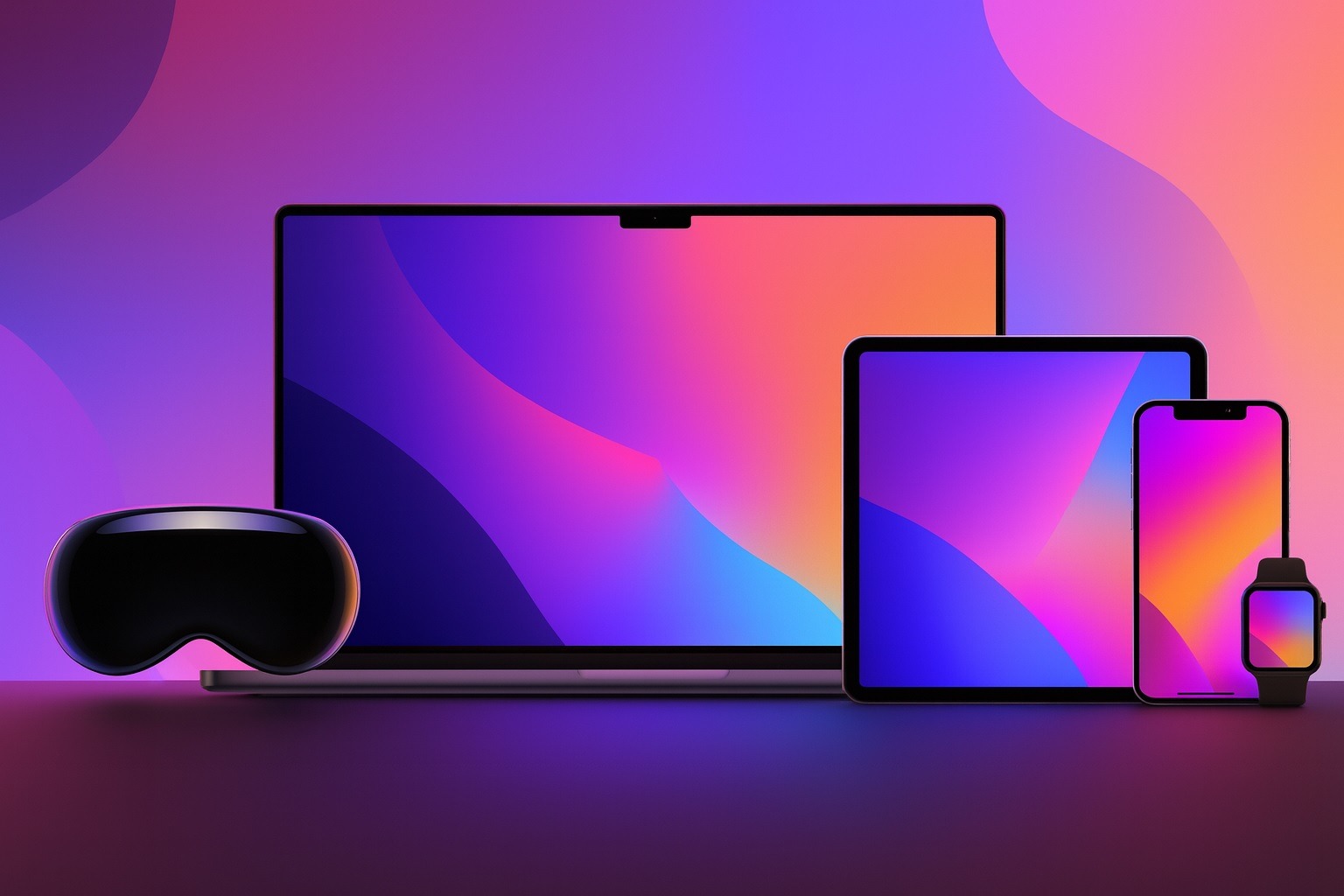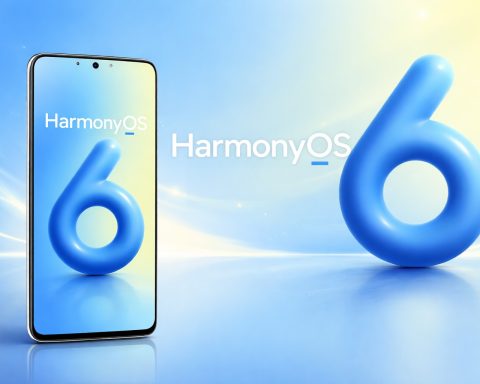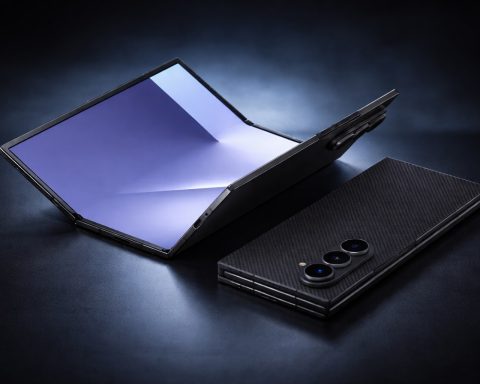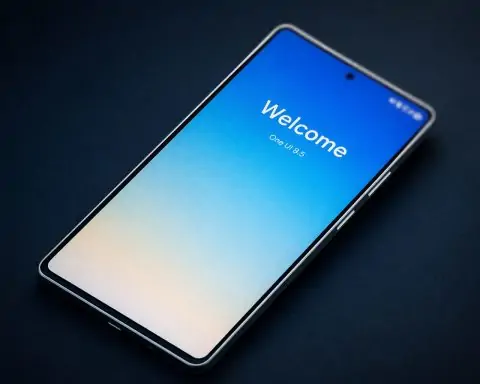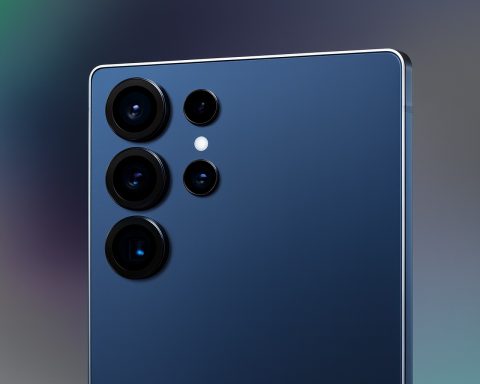- Major design leap: Apple’s iOS 26 introduced a dramatic new “Liquid Glass” interface – a translucent, glass-like design language inspired by visionOS – marking the biggest visual overhaul since iOS 7 [1]. This sleek redesign has drawn mixed reactions: some love the fresh look, while others complain it sacrifices usability [2]. Apple even added a toggle to make Liquid Glass more opaque after backlash from beta testers [3] [4].
- AI gets smarter: Under the hood, iOS 26 is packed with Apple Intelligence upgrades – Apple’s on-device AI features. New Live Translation in Phone, FaceTime, and Messages can transcribe calls or chats across languages privately on your iPhone [5]. A Call Screening feature can live-transcribe unknown callers so you can vet spam calls in real time [6]. The OS even lets you send screenshots to ChatGPT or perform visual searches instantly, thanks to built-in “visual intelligence” tools [7] [8].
- Hidden gems aplenty: Beyond the flashy features, iOS 26 quietly delivers dozens of quality-of-life improvements. You can now set custom snooze durations for alarms (1–15 minutes) [9], create ringtones from any audio file right on your iPhone (no GarageBand needed) [10], and even copy partial text from a message bubble for the first time [11]. An Adaptive Power mode intelligently balances performance and battery usage behind the scenes [12], and the Lock Screen now displays exactly how long until your phone is fully charged [13] – small tweaks that make daily use smoother.
- First big update incoming: The iOS 26.1 update (the first significant patch for iOS 26) is due in early November [14]. The Release Candidate is already out for testers [15], bringing new settings to address user feedback – for example, you can finally disable the Lock Screen camera swipe shortcut and adjust Liquid Glass transparency [16]. Apple is also expanding Apple Intelligence to support more languages including Dutch, Swedish, Turkish and more [17] [18]. A revamped Apple TV app icon arrives as Apple rebrands Apple TV+ to just Apple TV [19] [20]. Notably, iOS 26.1 may lay groundwork for Apple’s future AI plans: code hints at a new “Model Context Protocol” to integrate third-party AI models (like ChatGPT and others) into iOS more seamlessly [21] [22].
- Upgrade or wait? Upgrading to iOS 26 brings tangible perks – from better spam call blocking [23] to a more personalized, modern interface – and ensures your device gets the latest security fixes going forward. Apple’s Craig Federighi calls iOS 26 “a gorgeous new design with meaningful improvements… making iPhone even more helpful” [24]. However, some iPhone owners encountered early hiccups: reports of faster battery drain and performance stutters right after updating (especially on older models) emerged, though Apple noted some of this is temporary indexing that settles after a day or two [25] [26]. Importantly, not every iPhone can upgrade – iOS 26 dropped support for the 2018-era iPhone XS, XS Max and XR with A12 chips [27], making the iPhone 11 series (2019) the oldest models eligible [28]. If you have a supported device and don’t mind a short adjustment period to the new look, experts say the benefits outweigh the drawbacks – but more cautious users can stick with iOS 18 a bit longer, as Apple is still providing security updates for the previous OS for now [29] [30].
A Bold New Look Unifies Apple’s Platforms
Apple made an unusual jump in version numbering this year: it skipped from last year’s iOS 18 straight to iOS 26, aligning with iPadOS 26, watchOS 26, macOS 26 (codenamed “Tahoe”), tvOS 26, and even the new visionOS 26 for its Vision Pro headset [31] [32]. The idea was to synchronize all Apple operating systems under the same generation number for consistency [33]. With this change, the 2025 software updates form a coordinated 26-series across devices, and iOS 26 arrived as the “nineteenth” major iPhone OS release despite its higher version number [34].
The star of iOS 26 is unquestionably its Liquid Glass aesthetic – a systemwide design language of translucent, glass-like UI elements that react to motion and light. This design, influenced by Apple’s upcoming AR/VR visionOS, replaces the long-standing flat design from iOS 7 with something more dynamic and immersive [35]. App interfaces from Photos to Safari were refreshed to embrace curved, transparent panels that “reflect and refract” content underneath [36]. Widgets and icons can even adopt a clear theme to appear as if made of glass [37]. On the Lock Screen, text like the clock cleverly adjusts size to avoid overlapping your wallpaper’s subject [38], and new spatial wallpapers create a subtle 3D parallax effect as you move your iPhone [39].
Apple pitched Liquid Glass as a huge step forward. “iOS 26 shines with the gorgeous new design and meaningful improvements to the features users rely on every day, making iPhone even more helpful,” said Craig Federighi, Apple’s SVP of Software Engineering [40]. The goal was to make the interface more “expressive and personal” without losing the familiarity of iOS [41]. Many users agree the iPhone feels visually fresher – “more full-screen” in apps like Safari, as some have noted, with translucent bars and elements letting content take center stage [42].
However, the redesign has also proven polarizing. From the first developer beta in the summer, some testers were taken aback by the drastic change. Online forums quickly filled with feedback – positive and negative – about Liquid Glass. On one hand, fans call it “gorgeous,” saying that after a few weeks it “continues to get better as you use it”, with many coming to appreciate the new visuals [43]. On the other hand, critics argue Apple might have gone too far with form over function. “Design and aesthetics at the expense of usability and functionality… It is a sad day,” one disgruntled user complained as the new look rolled out in beta [44].
Mixed Reception: Praise, Backlash, and Apple’s Response
Liquid Glass Backlash: The most common complaint is that Liquid Glass can impair readability and comfort – especially in Dark Mode. With translucent panels and a subtle glow around icons, some users found the dark theme “dizzying” or felt icons looked slightly blurred and tilted [45] [46]. “This visual style was designed and approved by a bunch of people that do not use dark mode,” one Reddit user quipped when iOS 26 launched [47]. The blowback was significant enough that Apple spent the beta period tweaking the design. By the fourth beta of iOS 26.1, Apple introduced a “Tinted” vs “Clear” option for Liquid Glass, allowing users to reduce the transparency if the see-through effects prove distracting [48] [49]. Early tests suggest the more opaque “Tinted” mode even slightly improves battery life for those who prefer it [50] – a welcome option for the skeptics of the new look.
Battery and Performance Woes: As with many big iOS updates, some users initially reported that iOS 26 hurt their battery life or made their phone feel sluggish. In fact, complaints “piled up” about high battery drain right after upgrading [51]. Apple acknowledged that a new OS can temporarily tax your device – after installation, the system re-indexes files, downloads app updates and performs background tasks that can take a day or two [52]. “Upgrading to a new version can cause temporary issues affecting battery life and performance,” Apple even warned, reminding users this effect should subside [53]. Indeed, many who took the plunge found that after 24–48 hours, their battery stabilized. Still, not everyone is satisfied: older iPhones in particular have had mixed results. The iPhone 11 (the oldest iPhone that supports iOS 26) runs the new OS, but some owners observed “weird bugs and terrible performance” [54], while others with the same model said it remained “smooth and fast.” These inconsistent reports suggest iOS 26 pushes aging hardware to its limits. Notably, Apple dropped support for any iPhone with an A12 Bionic chip (like the 2018 iPhone XR/XS) [55], so those very old models cannot install iOS 26 at all – likely because features like the advanced AI and new design run best on newer chips.
User Interface Quirks: Another point of friction has been inconsistency in the UI updates. Apple redesigned the keyboard appearance to match Liquid Glass in many of its own apps, but third-party apps initially were still showing the old keyboard style [56]. This “two-faced” keyboard experience – modern in one app, old in another – annoyed users who found switching between them jarring [57]. Apple will likely push app developers to adopt the new components over time, but at launch it left parts of the experience feeling unpolished for some. There’s also the matter of delayed features: Apple touted digital IDs and even digital U.S. passports in Wallet during the iOS 26 preview, but quietly confirmed that the digital passport feature didn’t make the cut for launch [58]. U.S. travelers will have to keep using physical passports or IDs for now, as that capability is slated for a future update.
Despite the bumps, many users have embraced iOS 26 after a brief adjustment period. Positive feedback highlights that the new Lock Screen customization (like relocating widgets to the bottom) makes the phone feel more personal, and core apps like Maps, Music, and Photos have gained subtle improvements that people appreciate [59]. Even some early skeptics on the beta forums admitted that while the redesign shocked them at first, they “have come around in the last few weeks” as Apple refined the visuals [60]. In short, Liquid Glass may be divisive, but it’s growing on many users – and importantly, Apple has shown a willingness to fine-tune the experience based on feedback (the upcoming 26.1 update being a prime example of course-correcting some of these pain points).
Industry observers also have a split take. Mashable, for instance, noted that “Liquid Glass and the iOS 26 update have had a very mixed reception so far, but there are plenty of good reasons to upgrade, too.” [61] Early adopter forums buzzed with both excitement and frustration – a testament to how significant this update is. Meanwhile, Tom’s Guide found that “on the whole, it’s been a positive experience” once one adapts, praising “welcome improvements” like the smarter Phone and Messages features, even as the reviewer admitted he’s “still learning to tolerate” the new interface aesthetics [62]. This encapsulates the general consensus: iOS 26 is feature-rich and forward-looking, but its bold design changes may not be everyone’s cup of tea initially.
10 Hidden Features Apple Didn’t Shout About
While Liquid Glass and AI stole the spotlight at Apple’s WWDC keynote, iOS 26 is bursting with hidden gems – small features that didn’t make the headlines but can change your daily iPhone life for the better. As tech columnist Govind Choudhary quips, “the real joy of any iOS update is buried in the quiet improvements”, and iOS 26 is loaded with them [63] [64]. Here are some of the most useful under-the-radar additions iPhone users are now discovering:
- Custom Snooze Times: Tired of the default 9-minute snooze? For the first time ever, iOS lets you set your own snooze duration for alarms. Simply edit an alarm in the Clock app and you’ll see a Snooze Duration setting – pick anywhere from 1 to 15 minutes [65]. You can fine-tune each alarm’s snooze length individually, so your weekday wake-up can have a short snooze while your Sunday alarm allows a luxurious extra 15 minutes.
- Create Ringtones On-Device: Making a custom ringtone used to require a Mac or third-party apps. Not anymore – now you can turn any audio file or voice memo into a ringtone right on your iPhone. Just open a sound file (under 30 seconds) in the Files app, tap Share, and choose “Use as Ringtone.” iOS 26 will instantly add it to your ringtones in Settings [66]. This also works with recordings in the Voice Memos app. Personalizing your phone’s jingle has never been easier.
- Partial Copy in Messages: Ever needed to copy just part of a text message – like a verification code or an address – without copying the whole chat bubble? iOS 26 finally lets you do that. In the Messages app, press-and-hold on a message, tap Select, and now you can drag handles to highlight exactly the text snippet you need [67]. Copy it and paste away. No more grabbing unwanted text or taking screenshots just to save one line of info.
- Visited Places in Maps: Apple Maps quietly gained a useful journaling feature. It now keeps a private log of your recently visited places (with dates and times). If you’ve updated, open Maps, tap your profile, go to Places → Visited. You’ll see a history of locations you’ve been. It’s only visible to you and stored locally [68], but it can be handy for recalling that cafe you stopped by last week or tracking your travels. (And if this sounds a bit invasive, Apple provides a setting to disable it or clear the history [69].)
- Charging Time Estimates: Ever plug in your iPhone and wonder exactly how long until it’s charged? Now iOS 26 gives you an ETA for battery charging. When you start charging, the Lock Screen will display the time remaining to reach 80% and 100% charge [70]. You can also find this detail in Settings > Battery. It’s great for planning if you need a quick top-up before leaving home – you’ll know if a 15-minute charge will get you to full or if you’ll only hit, say, Fifty percent.
- Adaptive Power Mode: Building on the iPhone’s Low Power Mode, there’s a new smarter setting called Adaptive Power. When enabled, your phone will automatically balance performance and battery efficiency on the fly [71]. iOS will quietly dial back power usage during light tasks like reading articles or streaming music, but instantly ramp up to full performance for demanding tasks like gaming or video recording [72]. The beauty is you don’t have to toggle anything – it adjusts in the background. It’s like having a mini power manager that squeezes more life out of your battery without the strict limits of Low Power Mode (note: this feature may require newer iPhones, as it leverages on-device AI via Apple Intelligence [73]).
- Smarter Screenshots (Visual Intelligence): Taking screenshots is more powerful in iOS 26. After you snap a screenshot and tap the preview thumbnail, you’ll see new options powered by Apple’s visual intelligence. One nifty button is “Ask”, which will send the image to ChatGPT (via a secure interface) and allow you to ask questions or get info about the screenshot content [74]. Another is “Image Search,” which performs a quick Google (or other search engine) image lookup. You can even highlight specific parts of the screenshot and iOS will suggest context-specific actions, like “Add to Calendar” if it detects a date/event in the image [75]. It’s like Apple’s version of Google Lens, embedded right into the screenshot editor.
- Live Call Screening: Google’s Pixel phones have had call screening, and now Apple is catching up. If a call comes in from an unknown number, you’ll see a Screen Call option. Tap it, and the caller will be prompted to speak; you’ll watch a real-time transcript of whatever they say [76]. This way, you can decide to answer if it’s actually your pharmacy or a delivery guy – or decline if it’s just another telemarketer. It’s a welcome peace-of-mind feature for dodging spam calls without outright blocking everything. (Currently it’s available on iPhone models with newer neural engines and requires that Apple Intelligence language features are enabled.)
- Custom Chat Backgrounds: iOS 26 lets you add a personal touch to your iMessage conversations. You can now set custom backgrounds for individual message threads [77]. For example, give your family group chat a cozy photo backdrop, or set a fun gradient or color for a friend’s chat. Simply open a Messages thread, tap the contact name at the top, and choose Backgrounds – you can pick a solid color, a gradient, a specific photo, or even an AI-generated pattern to style the chat [78]. It doesn’t affect the other person’s phone (they’ll see their own chosen background or default), but it makes your messaging experience more you.
- Swipe from Anywhere to Go Back: Navigating apps is easier now thanks to a subtle gesture improvement. Previously, you often had to swipe inward from the very left edge of the screen to go back. In iOS 26, Apple widened the gesture zone – you can swipe right from anywhere on the screen to trigger the Back action in many apps (Mail, Settings, Safari, etc.) [79]. This change, though small, makes one-handed use smoother, especially on larger iPhones, as you don’t have to reach all the way to the edge.
These are just 10 of the hidden features users have been delighted to find in iOS 26, but there are plenty more sprinkled throughout the OS. From privacy and accessibility enhancements to little UI tweaks, Apple’s update is full of these minor upgrades that weren’t spotlighted on stage. Together, they make the iPhone experience more personal and efficient [80] [81] – often in ways you might not notice until you stumble upon them in day-to-day use.
iOS 26.1: Apple Listens (Liquid Glass Tweaks, AI in More Languages, and More)
As early adopters have provided feedback on iOS 26, Apple has been busy readying a follow-up update, iOS 26.1, to refine the experience and introduce a few new features of its own. On October 28, Apple released the Release Candidate (RC) for iOS 26.1 to developers and public beta testers [82] [83], signaling that the official public release is imminent (expected in the first days of November) [84]. This will be the first major point-update of the iOS 26 cycle, and it’s shaping up to be more substantial than the usual bug-fix patch.
Notably, iOS 26.1 addresses some of the very issues discussed above. For instance, there’s now a setting to turn off the Lock Screen camera shortcut – no more accidentally launching the Camera by swiping left on the lock screen if you disable it [85]. This was a pain point for some users, so giving people the choice is a welcome change. Likewise, iOS 26.1 adds a Liquid Glass opacity toggle in Settings, letting users choose between the original ultra-translucent look (“Clear”) and a new semi-opaque “Tinted” mode [86] [87]. If the see-through UI elements made certain backgrounds hard to read, you can now tint them for better contrast. Apple is clearly responding to the Liquid Glass backlash by making the design more customizable.
Several stock apps and system visuals are getting polish too. The Phone app is gaining a setting to disable haptic feedback when calls connect or drop (some found the vibration jarring) [88]. The Calendar app will show category tags in full color for better clarity [89]. Safari’s tab bar is tweaked to appear wider [90], and the Photos app gets a refined video scrubber UI [91]. Little improvements like swiping on the Now Playing player to skip tracks in Apple Music will also roll out to everyone with 26.1 [92]. And a minor but nice touch: a new, more colorful Apple TV app icon will replace the old one, as Apple officially rebrands its TV+ streaming service to just “Apple TV” with a vibrant new logo [93]. (This rebrand coincides with Apple becoming the official Formula 1 streaming partner in 2026, which the TV app update hints at [94].)
iOS 26.1 also expands the horizons of Apple Intelligence, Apple’s AI-driven features. The update adds support for nine additional languages in the Apple Intelligence settings – including Danish, Dutch, Swedish, Norwegian, Turkish, Portuguese (Portugal), Vietnamese, and Traditional Chinese – which means users who speak those languages can now interact with Apple’s AI features in their native tongue [95] [96]. In tandem, AirPods Live Translation (which lets AirPods users get real-time translated captions for conversations) is extending to five more languages: Japanese, Korean, Italian, and both Simplified and Traditional Chinese [97] [98]. This is a big deal for international users waiting for Apple’s on-device translation and Siri-intelligence features to support more than just English and a handful of others. Apple is clearly pushing its AI features globally with this update.
Interestingly, keen-eyed developers digging through the beta code of iOS 26.1 have found references that point to Apple’s future ambitions. One of the buzzworthy revelations is the “Model Context Protocol (MCP)” [99], an under-the-hood framework which, while not directly visible to users, could pave the way for third-party AI models and assistants to work more seamlessly on iPhones. Essentially, MCP would provide a standard interface for outside Large Language Models (LLMs) – think ChatGPT, Bing Chat, or others – to integrate with Apple’s on-device intelligence in a privacy-friendly way [100]. In fact, AppleInsider noted “references to expanded support of third-party AI services beyond ChatGPT” in the iOS 26.1 beta [101]. Apple hasn’t formally announced this feature yet, so it may not fully launch in 26.1, but its presence in the code shows Apple preparing for a more open AI ecosystem on iOS. This could mean in the near future, your iPhone’s intelligent assistant might leverage not just Apple’s own AI (like Siri’s successor) but also tap into other AI services for answers – all under Apple’s privacy safeguards. It’s a space to watch.
Another quietly evolving area is compatibility beyond Apple’s own hardware. Code in the iOS 26.1 beta also indicated work on notification support for third-party smartwatches [102]. Presently, if you’re not wearing an Apple Watch, iPhones don’t officially support sending notifications to other wearables. Hints in 26.1 suggest Apple might be exploring ways to forward iPhone notifications to devices like Fitbit or Garmin watches in the future [103]. This is unconfirmed, but it signals a slight softening of Apple’s walled garden – possibly acknowledging that some iPhone users pair their phone with non-Apple wearables and should still get their alerts. Whether this arrives in 26.1 or later remains to be seen.
It’s worth mentioning that iOS 26.1 won’t be coming alone. Apple is simultaneously testing iPadOS 26.1, macOS Tahoe 26.1, watchOS 26.1, tvOS 26.1, and even visionOS 26.1 for the Vision Pro headset [104] [105]. All these are aligned for release around the same early November timeframe [106]. This synchronized multi-OS update underscores how Apple’s ecosystem is now unified under the 26 generation. For Mac users, macOS Tahoe (presumably macOS 14 by old numbering) will bring its own set of features and likely mirror some of the iOS changes (like design cues and app improvements). And for the first time, Apple’s visionOS – the operating system for its upcoming AR/VR device – will also see a 26.1 update, even though the hardware (Vision Pro) isn’t widely available yet. It all signals that Apple is laying a cohesive foundation across devices.
For iPhone owners, the takeaway is that iOS 26.1 is poised to make iOS 26 even better. It fixes quirks, adds customization, broadens features to more users, and hints at exciting future capabilities. If you’ve been on the fence due to Liquid Glass or other complaints, the 26.1 update may address many of those concerns, making now a good time to hop onboard.
Should You Upgrade? Experts Weigh In
With all this information, iPhone users might still be asking the big question: upgrade to iOS 26 now or stick with what I have? It’s a fair consideration whenever a major overhaul comes out. The answer isn’t one-size-fits-all, but we can break down the pros and cons as highlighted by experts and early adopters.
Reasons to Upgrade: If you have a compatible iPhone (iPhone 11 or newer), there are compelling reasons to make the jump sooner rather than later. Security is a big one – running the latest iOS ensures you’ll continue getting critical security patches as threats emerge [107]. Apple will support iOS 18 with security updates for a while, but iOS 26 will be the baseline going forward into 2026. Feature-wise, iOS 26 brings a slew of useful improvements: the Call Screening and spam call auto-blocking can dramatically cut down on nuisance calls [108]. The integrated Live Translation can be invaluable if you communicate in multiple languages or travel abroad (translating text or even voicemail on-device) [109]. Many stock apps get enhancements only available on iOS 26 – Maps with offline maps and EV charging info, Messages with better stickers and search, Wallet with IDs and Keys, and so on [110]. And then there’s the fun factor: features like the customizable contact posters, the all-new stickers and emoji mashups (Genmoji), and the refreshed UI can make your phone feel new again. If you’re someone who enjoys the latest and greatest, iOS 26 offers plenty to play with.
Several tech reviewers who were initially wary have ultimately come around. Tom’s Guide’s reviewer, after using iOS 26 for an extended period, wrote “with iOS 26 introducing some welcome improvements to the mix… on the whole, it’s been a positive experience” [111]. The initial shock of Liquid Glass wore off as the practical benefits became evident. In other words, the learning curve is short – you might need a few days to adjust your eyes and muscle memory, but afterward you’re left with an OS that, in many ways, is more capable and polished than its predecessor.
Reasons to Wait (or Not Upgrade): On the flip side, there are a few scenarios where holding off or not upgrading could be prudent. First, if you have an older supported device like an iPhone 11 and you’re extremely sensitive to performance issues, you might choose to stay on iOS 18 a bit longer. While iOS 26 does run on the iPhone 11, it’s the minimum spec and as mentioned, some users saw stutters or bugs on that hardware [112]. Apple’s updates like 26.1 will likely optimize this, but if your phone is your lifeline, a “wait and see” approach until 26.1 or 26.2 might be wise. Additionally, if you absolutely hate translucent UIs or any change to your phone’s look, you could delay – although Apple has now provided options (tinted mode, etc.) to alleviate many of those concerns.
Another factor: app compatibility. By now most popular apps have updated for iOS 26, but if you rely on a very specific older app that hasn’t been updated in years, there’s a slim chance it might not play nice with the new OS. This is less common today, but it’s worth checking forums or the developer’s site if you have mission-critical apps.
For the vast majority, however, there aren’t significant deal-breakers in iOS 26. Common bugs like battery drain have proven temporary [113], and Apple’s rapid 26.1 cycle is squashing many early issues. Apple has also signaled its confidence by moving all its devices to this unified version – even brand-new products like the upcoming Vision Pro will be on “26”. That means Apple is putting its full weight behind this generation.
One more note: if your device isn’t eligible (e.g., you’re using an iPhone XR/XS or older), unfortunately iOS 26 isn’t in the cards for you. Those iPhones will remain on iOS 18, which Apple will maintain for a bit but eventually phase out. You might consider this when planning your next phone upgrade; iOS 26’s device cutoff indicates that anything below an iPhone 11 is nearing end-of-life for major iOS support [114]. If you want the new goodies, an iPhone upgrade might be necessary down the line.
Expert consensus seems to be that iOS 26 is a worthwhile update for those who can get it. Tech author Jason Aten argued that while the Liquid Glass design might be polarizing, “there are positives to iOS 26, as well”, emphasizing the new capabilities and privacy enhancements that come with Apple’s AI integration [115]. And as Mashable highlighted, there are “plenty of good reasons to upgrade” despite the mixed reception to the aesthetics [116]. In essence, if you value the functional improvements – and/or if you’re intrigued by the new look – you should feel confident updating, especially with the 26.1 refinements. If you’re extremely change-averse or on borderline hardware, you can safely stay on iOS 18 a bit longer; Apple won’t force the update on you, and security patches will keep coming for now [117].
Finally, remember that upgrading doesn’t have to be a leap into the unknown. By now, iOS 26 has been out for over a month, and iOS 26.1 is around the corner with fixes. The wild bugs (if any) have largely been addressed. And you’ve got the option to tweak the interface to your liking (for example, enabling the tinted mode to tone down Liquid Glass). Plus, you can always visit an Apple Store or a friend with iOS 26 to see and feel the changes before deciding.
Bottom line: if your iPhone supports iOS 26, there’s a strong case to join the “26-generation” and enjoy what Apple has built – a more intelligent, visually striking iPhone experience that’s set up for the future. The update brings iPhones into a new era of design unity across Apple’s ecosystem, and packs in features that make everyday tasks a bit easier. As Apple’s Craig Federighi put it, the aim is to make the iPhone “even more helpful” in your life [118]. Despite some initial controversy, iOS 26 is delivering on that promise for many users, and with ongoing updates, it’s only getting better.
Sources: Apple Newsroom [119] [120]; AppleInsider [121] [122]; MacRumors [123] [124]; BGR [125] [126]; Mint (Livemint) [127] [128]; Tom’s Guide [129] [130]; Mashable via X [131]; Wikipedia [132] [133].
References
1. en.wikipedia.org, 2. www.tomsguide.com, 3. www.tomsguide.com, 4. www.macrumors.com, 5. www.apple.com, 6. www.livemint.com, 7. www.apple.com, 8. www.livemint.com, 9. www.livemint.com, 10. www.livemint.com, 11. www.livemint.com, 12. www.livemint.com, 13. www.livemint.com, 14. www.macrumors.com, 15. www.bgr.com, 16. www.macrumors.com, 17. www.macrumors.com, 18. www.bgr.com, 19. www.macrumors.com, 20. www.bgr.com, 21. appleinsider.com, 22. appleinsider.com, 23. www.tomsguide.com, 24. www.apple.com, 25. www.tomsguide.com, 26. www.tomsguide.com, 27. en.wikipedia.org, 28. www.tomsguide.com, 29. www.tomsguide.com, 30. www.tomsguide.com, 31. appleinsider.com, 32. en.wikipedia.org, 33. en.wikipedia.org, 34. en.wikipedia.org, 35. en.wikipedia.org, 36. en.wikipedia.org, 37. en.wikipedia.org, 38. en.wikipedia.org, 39. www.apple.com, 40. www.apple.com, 41. www.apple.com, 42. www.tomsguide.com, 43. www.tomsguide.com, 44. www.tomsguide.com, 45. www.tomsguide.com, 46. www.tomsguide.com, 47. www.tomsguide.com, 48. www.macrumors.com, 49. www.macrumors.com, 50. www.macrumors.com, 51. www.tomsguide.com, 52. www.tomsguide.com, 53. www.tomsguide.com, 54. www.tomsguide.com, 55. en.wikipedia.org, 56. www.tomsguide.com, 57. www.tomsguide.com, 58. www.tomsguide.com, 59. www.tomsguide.com, 60. www.tomsguide.com, 61. x.com, 62. www.tomsguide.com, 63. www.livemint.com, 64. www.livemint.com, 65. www.livemint.com, 66. www.livemint.com, 67. www.livemint.com, 68. www.livemint.com, 69. www.livemint.com, 70. www.livemint.com, 71. www.livemint.com, 72. www.livemint.com, 73. en.wikipedia.org, 74. www.livemint.com, 75. www.livemint.com, 76. www.livemint.com, 77. www.livemint.com, 78. www.livemint.com, 79. www.livemint.com, 80. www.livemint.com, 81. www.livemint.com, 82. www.macrumors.com, 83. www.bgr.com, 84. www.macrumors.com, 85. www.macrumors.com, 86. www.macrumors.com, 87. www.macrumors.com, 88. www.bgr.com, 89. appleinsider.com, 90. appleinsider.com, 91. appleinsider.com, 92. appleinsider.com, 93. www.macrumors.com, 94. www.bgr.com, 95. www.macrumors.com, 96. www.bgr.com, 97. www.macrumors.com, 98. www.bgr.com, 99. appleinsider.com, 100. www.bgr.com, 101. appleinsider.com, 102. www.bgr.com, 103. www.bgr.com, 104. www.macrumors.com, 105. www.bgr.com, 106. www.macrumors.com, 107. www.tomsguide.com, 108. www.tomsguide.com, 109. www.apple.com, 110. www.tomsguide.com, 111. www.tomsguide.com, 112. www.tomsguide.com, 113. www.tomsguide.com, 114. en.wikipedia.org, 115. currently.att.yahoo.com, 116. x.com, 117. www.tomsguide.com, 118. www.apple.com, 119. www.apple.com, 120. www.apple.com, 121. appleinsider.com, 122. appleinsider.com, 123. www.macrumors.com, 124. www.macrumors.com, 125. www.bgr.com, 126. www.bgr.com, 127. www.livemint.com, 128. www.livemint.com, 129. www.tomsguide.com, 130. www.tomsguide.com, 131. x.com, 132. en.wikipedia.org, 133. en.wikipedia.org
